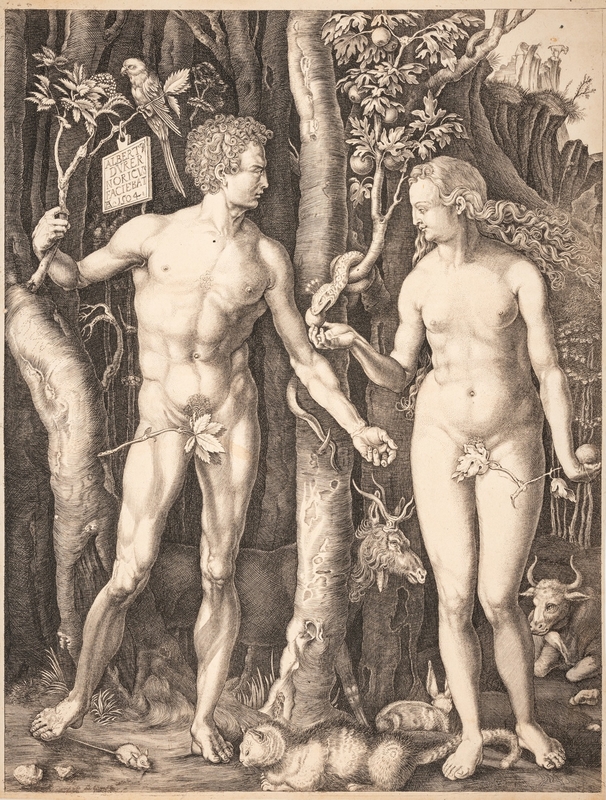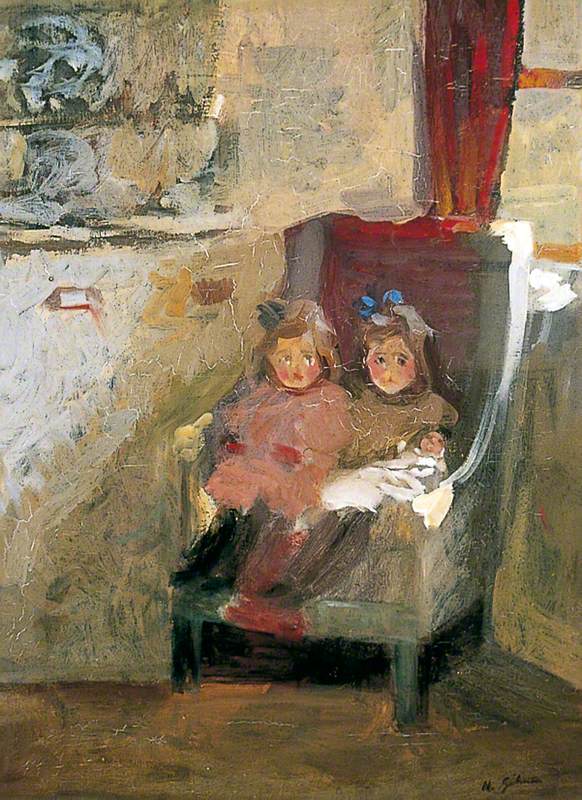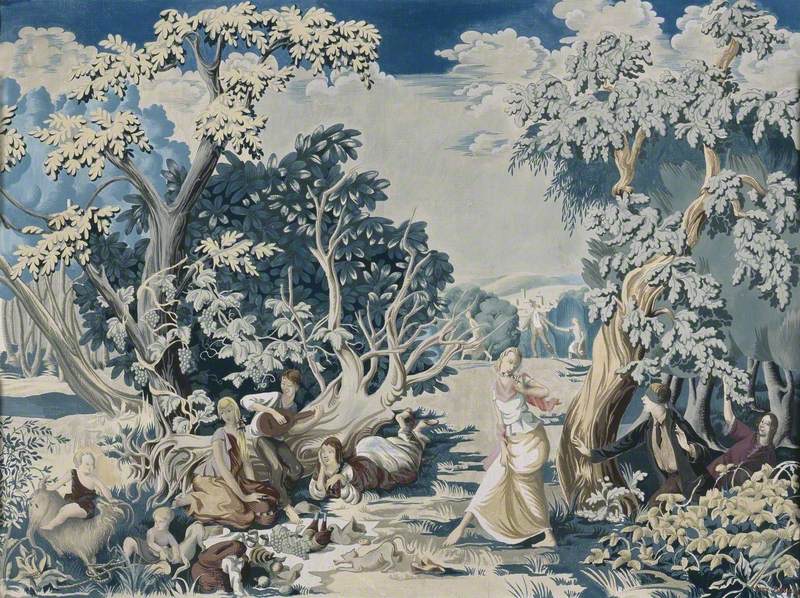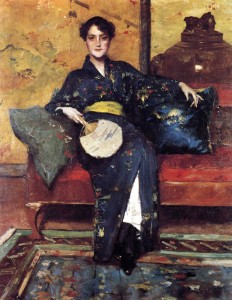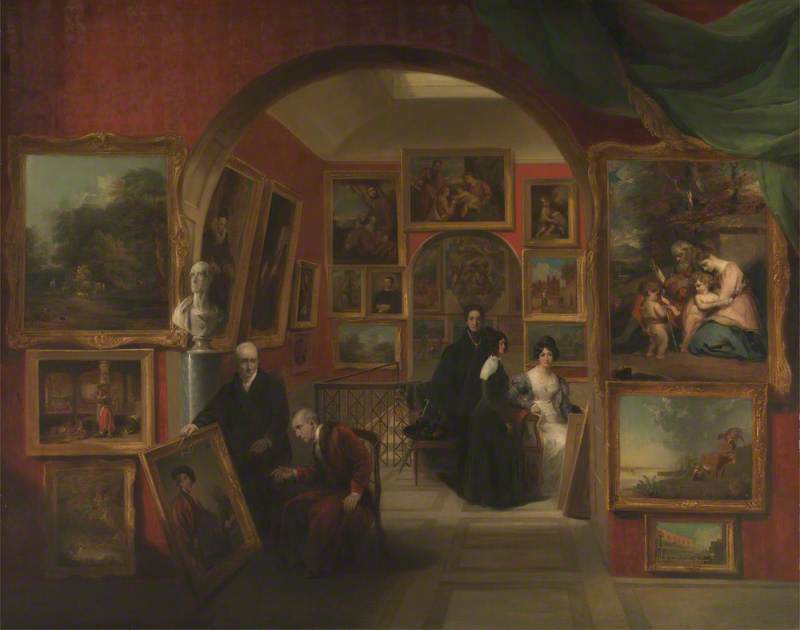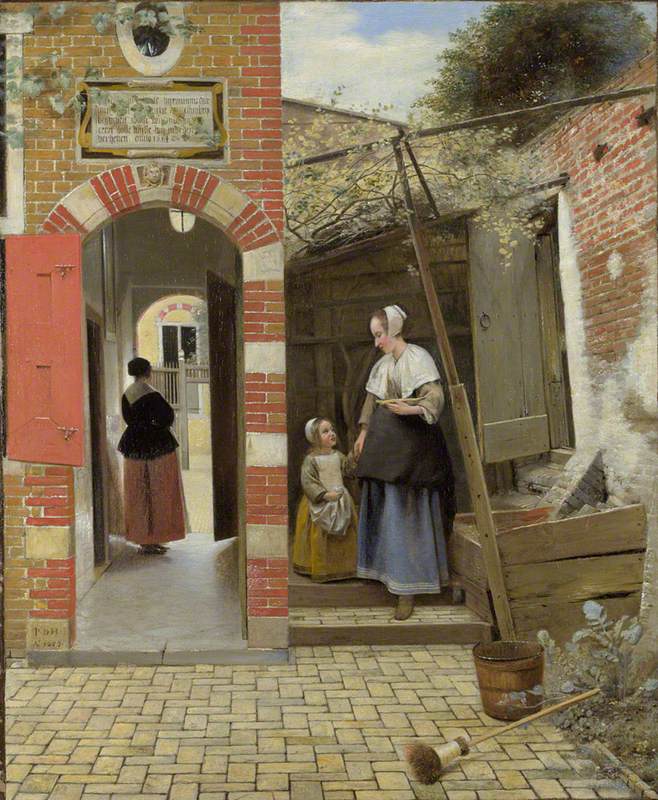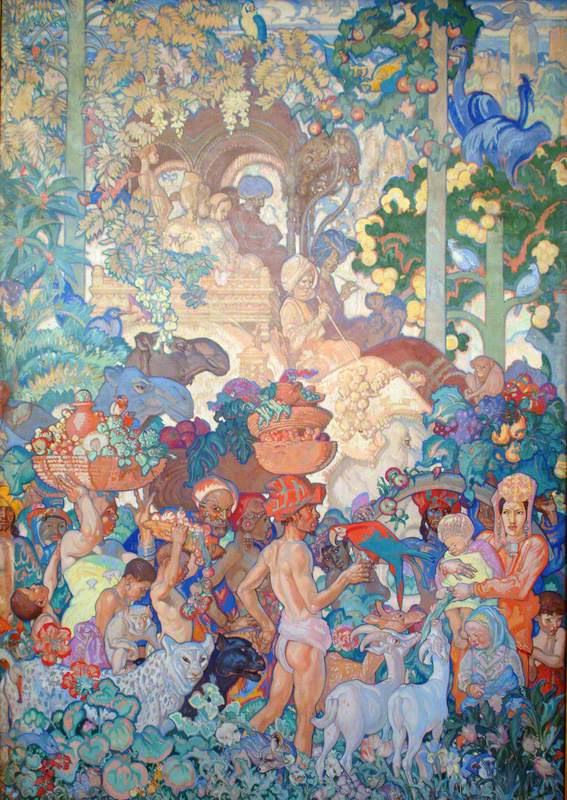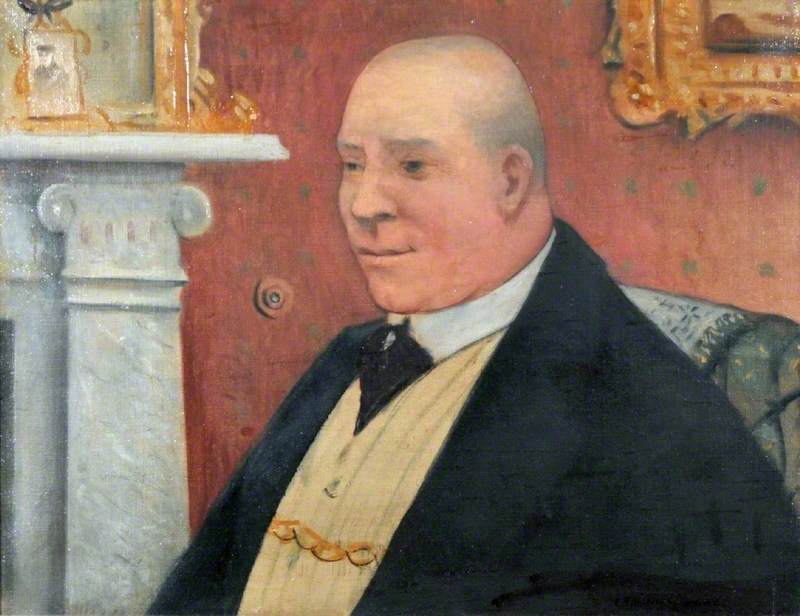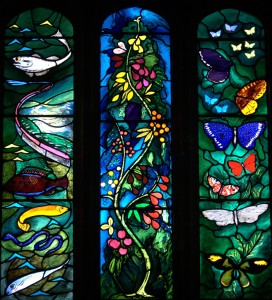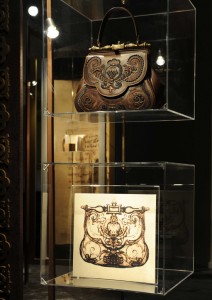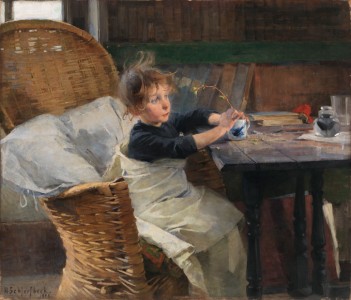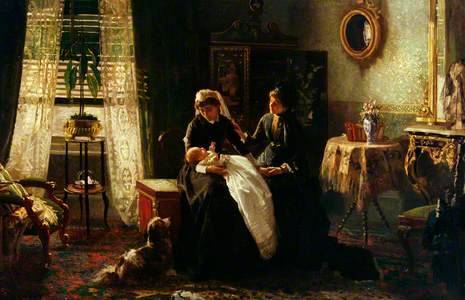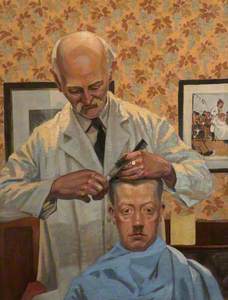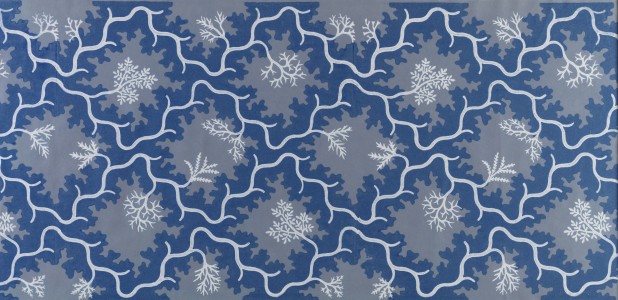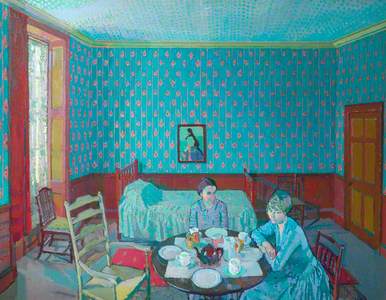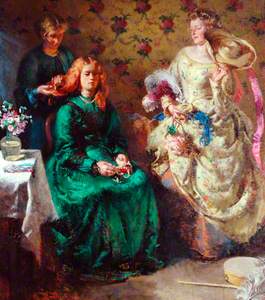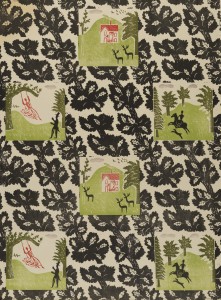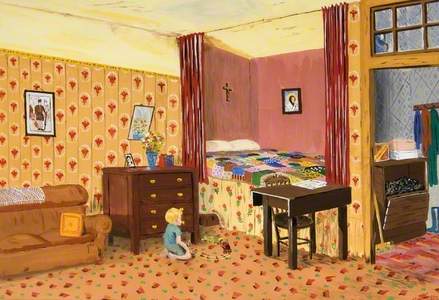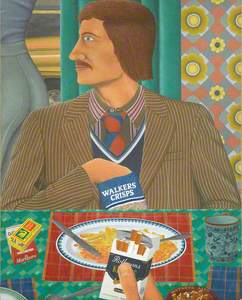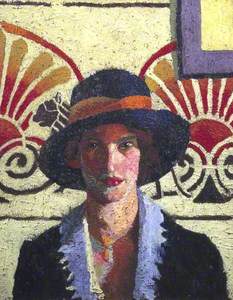In The Yellow Wallpaper, the 1892 novella by Charlotte Perkins Gilman, a young mother confined to an upstairs room by her controlling husband slowly descends into a madness brought on by the wallpaper she believes to be mutating before her eyes. Such reactions are extreme but there is no doubt everyone has a view on wallpaper. It can be loved for its ability to transform a room or decried for its tastelessness. Opinions are rarely neutral.
As new layers are pasted over old, wallpaper can reveal a hidden past and make an invaluable contribution to social and architectural history. Artists have frequently used wallpaper in depictions of interiors to give the viewer an insight into the tastes and circumstances of the sitters populating their work. Let's unroll what artworks can tell us about wallpaper history.
Wallpaper came into being as a means of decoration partly by imitating textiles. Until the late 1600s the wealthy had typically covered their walls in tapestries and wool or silk damasks, so the early patterned papers sought to emulate these designs. At this time wallpaper was printed by inking a wooden block with a design carved into it, and then pressing it onto the paper in a repeating pattern – a method that continued well into the nineteenth century.
Interior of a Wallpaper Manufacturer's Workshop
mid-19th C
British (English) School 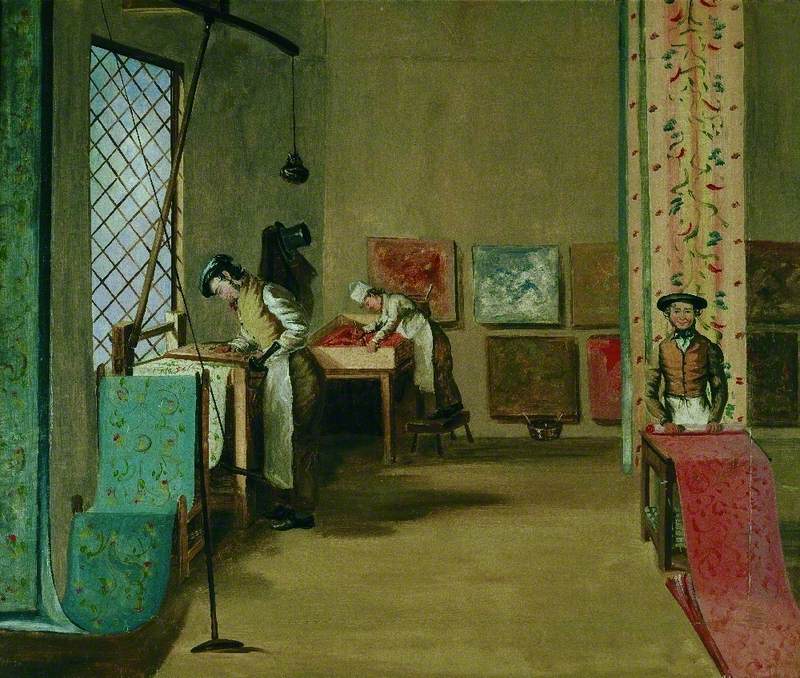
Flock wallpaper, a more luxurious product, was made by applying an adhesive to a design on thick paper and then sprinkling powdered wool over the top. The powder adhered only to the design. It is still found in many stately homes today in its original form.
This may be what Martinetti is depicting in his imagined eighteenth-century interior. The finely dressed ladies jumping onto the couch to avoid a mouse are at risk of being upstaged by the richly textured wallcovering behind them. Though it appears to be a flock paper, the sheen on the right-hand side of the wall suggests that it could equally be an embossed leather paper.
Leisure Time in an Elegant Setting
c.1663–1665, oil on canvas by Pieter de Hooch (1629–1684) 
Gilt leather was used as a wallcovering long before wallpaper. Originating in North Africa, it eventually started to be produced in London in the mid-seventeenth century, though it was largely the preserve of the wealthy. Dutch paintings of the period show how these hangings were used and Vermeer's inventory of 1676 reveals that he had them in his own home in Delft.
A panel of Chinese wallpaper
c.1750–1800 by unknown artist 
In the late seventeenth century the East India Company brought Chinese wallpapers and artefacts into British homes. These luxurious handmade papers did not come in rolls but as individual pieces featuring a single image which were mounted on the wall in a form of collage, as can still be seen today at Saltram, owned by the National Trust. These papers were a signifier of great wealth and Chinoiserie designs generally have remained enduringly popular.
A Domestic Interior with Two Women Wearing Black, One Holding a Baby
c.1885
Alexander Mark Rossi (1840–1916) 
The rapid urbanisation of the eighteenth century made wallpaper a fashionable necessity for the middle classes, but it was technological innovations in the nineteenth century, enabling wallpaper to be printed by engraved rollers in continuous lengths, that brought wallpaper within the reach of all classes.
While stripes and small geometric designs were popular, large-scale designs, especially florals, were favoured for drawing rooms, where guests would see them. Combined with the thick rugs and heavy draping of a Victorian interior, these papers conspired to make living areas much darker than we would choose today.
The advent in the 1870s of 'sanitary papers', which resisted moisture and could be wiped, made wallpaper suitable for more areas of the home and rendered it a mark of respectability. However, unbeknown to householders, wallpaper was not always safe. Advances in chemical compounds allowed for brighter colours, but it was arsenic which made this possible. Mrs Beeton warned against the use of brilliant green wallpapers, in particular, a fact of which this customer at the bazaar is clearly unaware.
Design reformers such as William Morris and Owen Jones campaigned against the trend for naturalistic florals, arguing that such designs undermined the true beauty of nature with their inferior imitations. They sought a return to the honesty of block printing, advocating the superiority of flat stylised designs more suited to the medium of flat walls.
Marigolds (The Bower Maiden, Fleur-de-Marie)
1874
Dante Gabriel Rossetti (1828–1882) 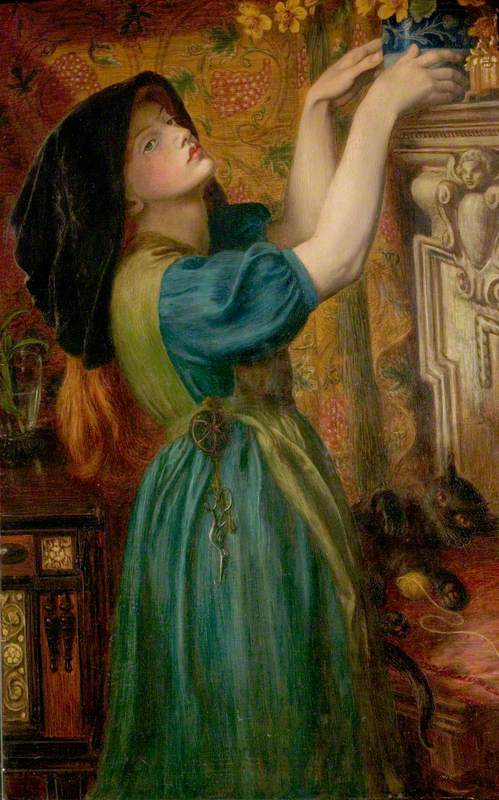
The curtain in Marigolds gives an indication of this kind of design. These found favour with the better-off and artistically inclined middle classes and many are still in print today.
Thanks to artists like Harold Gilman and the Camden Town Group, the wallpapers of ordinary homes in North London in the early twentieth century are well documented in paint. In their realistic depictions of urban life and use of brilliant colour laid on with a thick brush, we see the wallpapers of bedsitters and cafés come to life. Wallpaper could be obtained very cheaply and it was not unusual in heavily industrialised areas to repaper every year.
Gilman's wallpapers give important historical context to his narratives. In his Shopping List, the modest sprigged floral wallpaper framing the doorway and the dresser with its neatly hung cups lend a sympathetic respectability to the woman bent over her work.
During the First World War, wallpaper production was severely constrained. In the aftermath, with so much business lost to the USA, Britain embarked on an intense sales campaign to stimulate demand. While design critics, influenced by the Bauhaus, advocated the use of plain paint as the only acceptable wall treatment, many owner-occupiers of the newly built suburban homes clung to nostalgic chintzy florals in rich reds, greens and blues.
While some jazz moderne geometric motifs crept into the brown and orange flower and leaf designs of the 1930s, known as 'autumn tints', popular taste was overwhelmingly for traditional designs.
Wallpaper was promoted not only as a way of brightening or updating a home but as a necessary adjunct to spring cleaning and a source of health and wellbeing for the whole family. The beleaguered housewife was expected to choose a wallpaper for her children that would be both psychologically beneficial and educational.
In 1944, the Council of Industrial Design was set up to address the parlous state of product design and the wallpaper industry turned to known designers to boost trade. Artist-designers such as Lucienne Day, Edward Bawden, John Aldridge and June Lyon were commissioned to create new designs.
Adopting a brighter colour palette, papers took their cue from abstract art whilst featuring household objects, fruit and vegetables or aspirational items such as pot plants and wine carafes. Contemporary house design saw the introduction of open-plan living and wallpaper was useful for delineating the different spaces.
The 1960s and 1970s saw an explosion of bright abstracted geometrics and stylised florals. The new vinyl-coated papers made wallpaper possible for any area of the house and a well-established DIY culture sparked a revival for the trade. It is memorable as the era of large, bold designs in turquoise and especially orange, as favoured by Mrs Ogmore-Pritchard in this painting.
After the co-ordinated florals and stripes of the 1980s and a revived love affair with chintz, wallpaper fortunes have waxed and waned. Homeowners and landlords alike have been encouraged to choose paint over paper to make a home appealing to new buyers and easy to maintain. Wallpaper now seems like a courageous choice. But with digital printing, exciting new possibilities such as single panoramic images and personalisation mean that wallpaper is already staging another revival.
Wallpaper lends an identity to a room that stays in the memory long after the furniture or the occupants have gone, or the artist dried their brushes.
Lucy Ellis



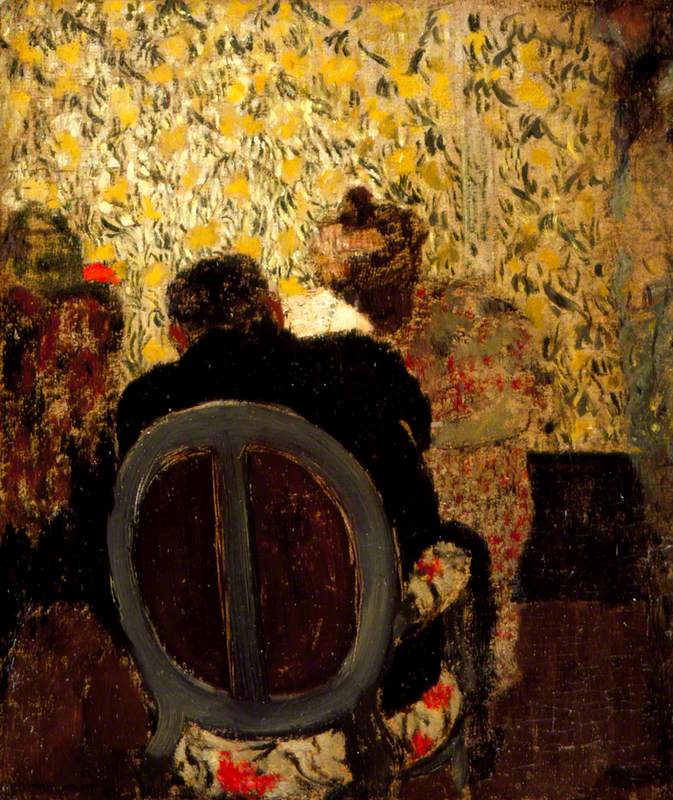



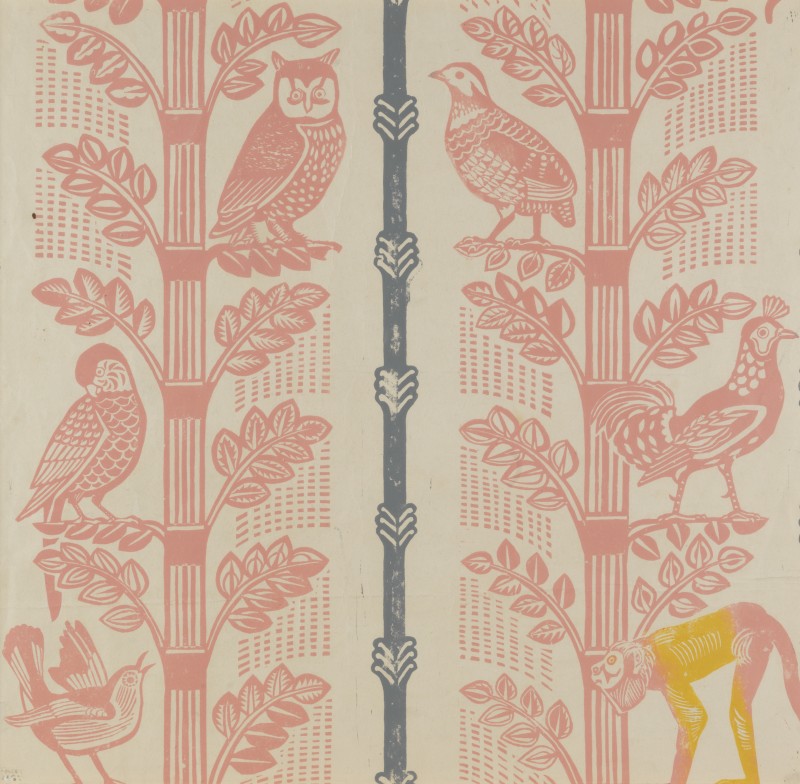

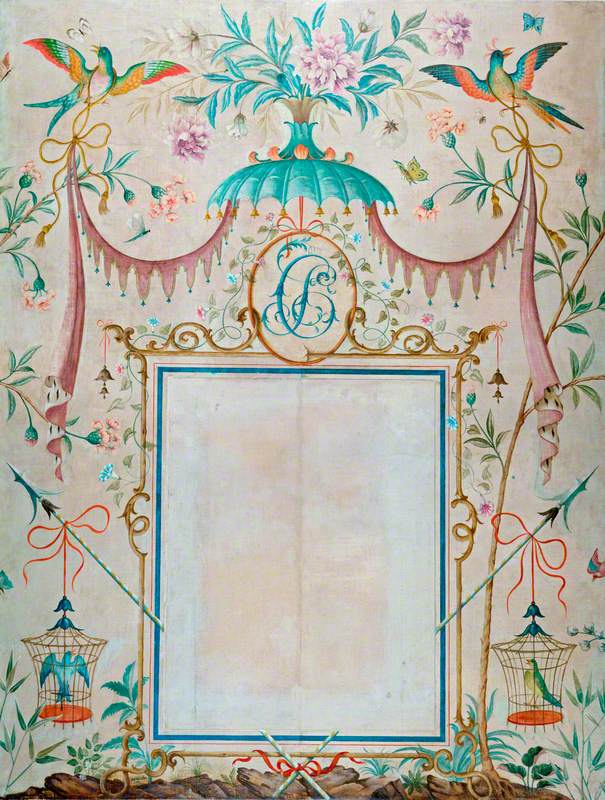
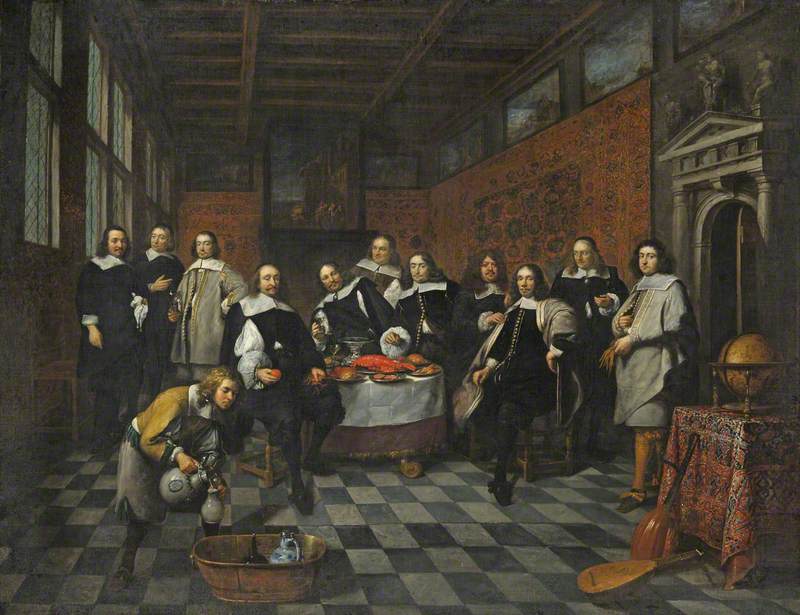
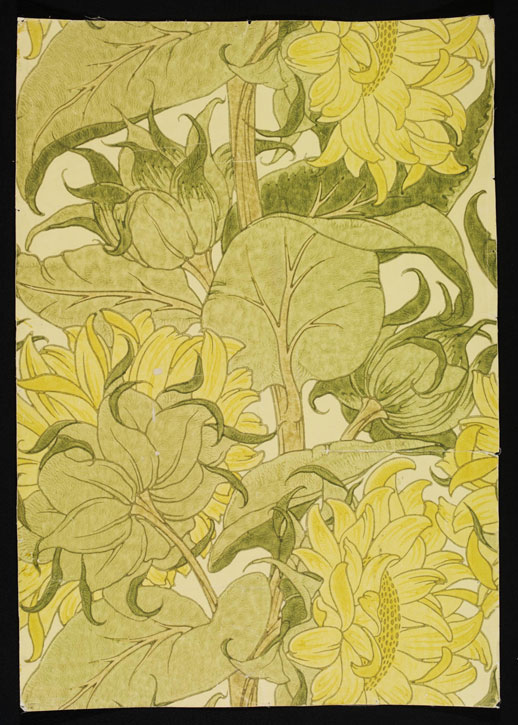
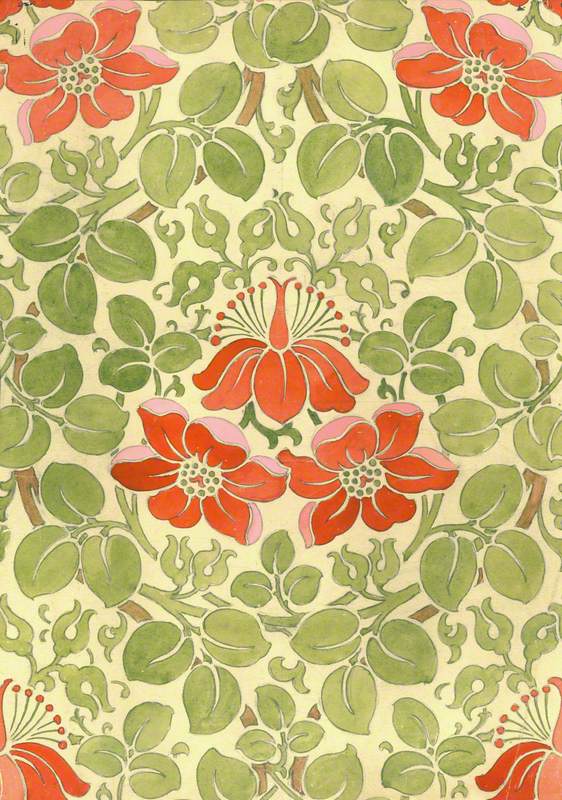

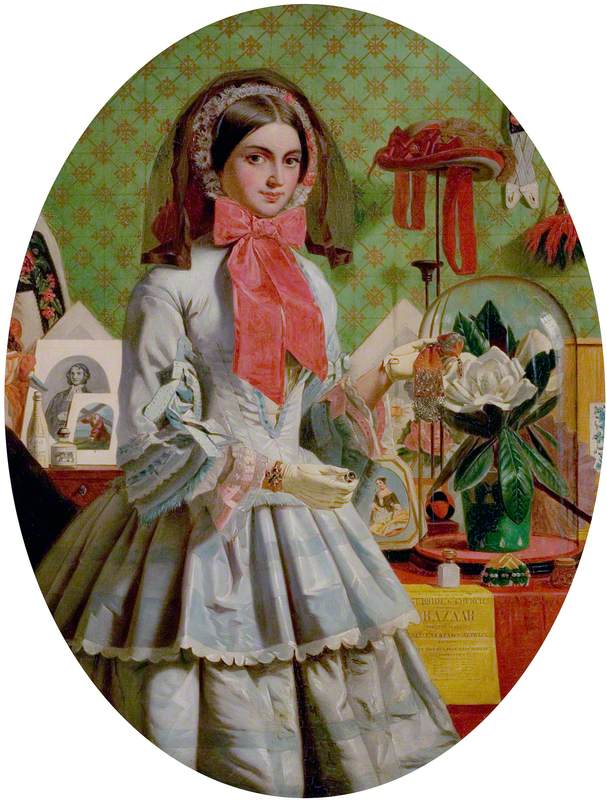
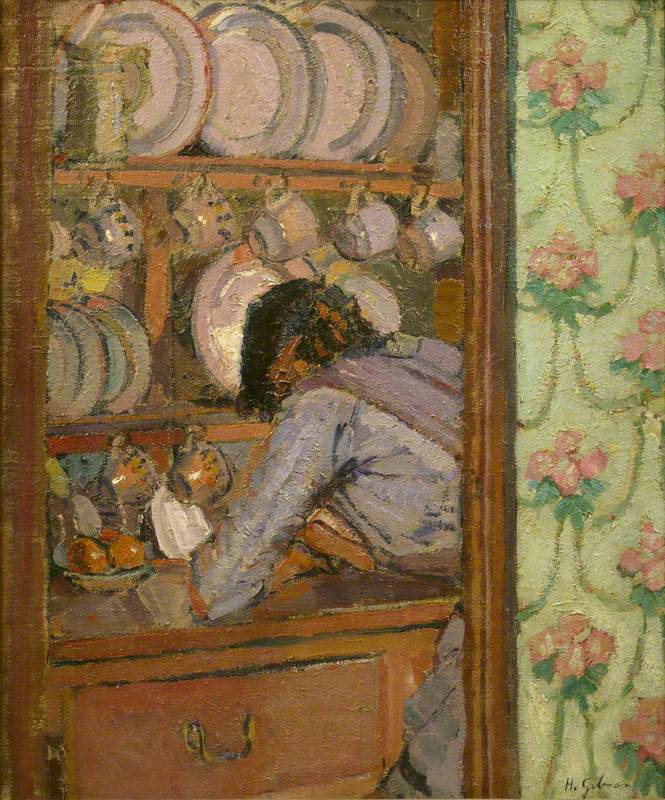
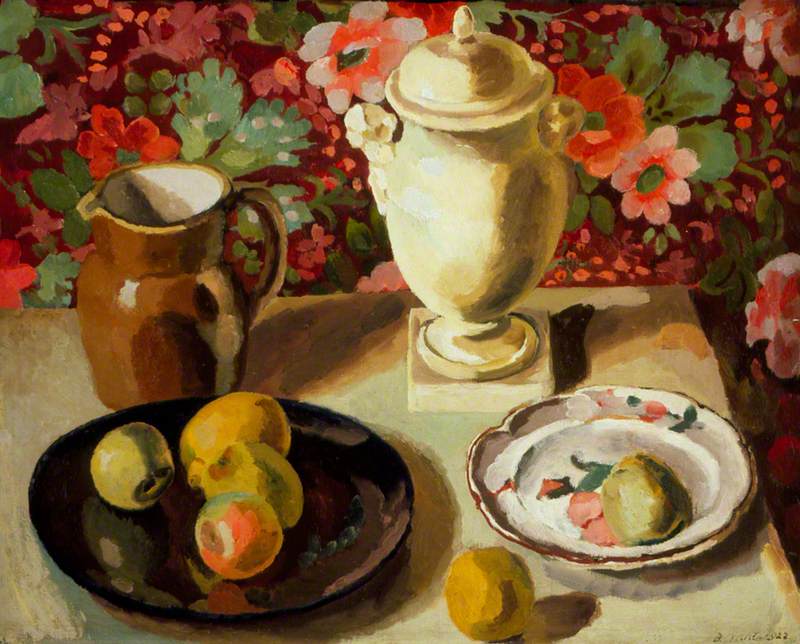

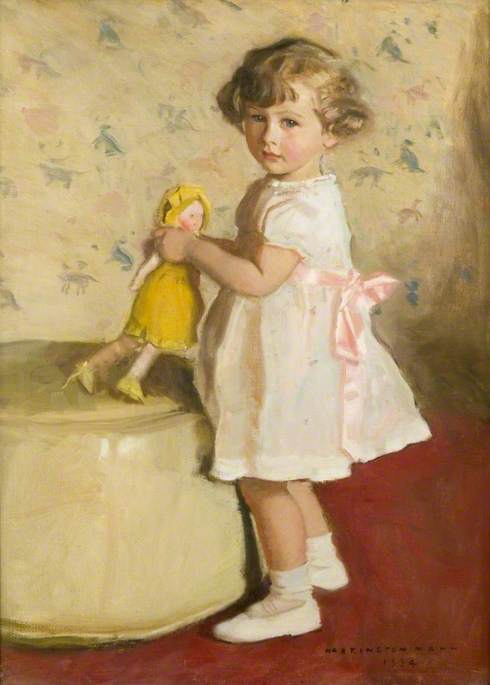

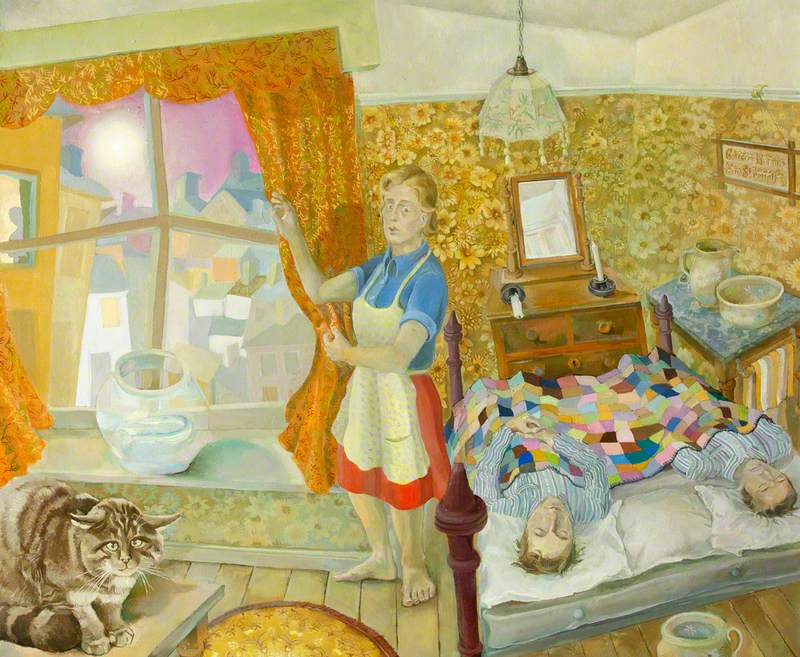


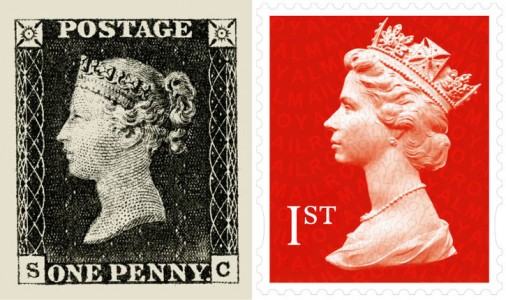
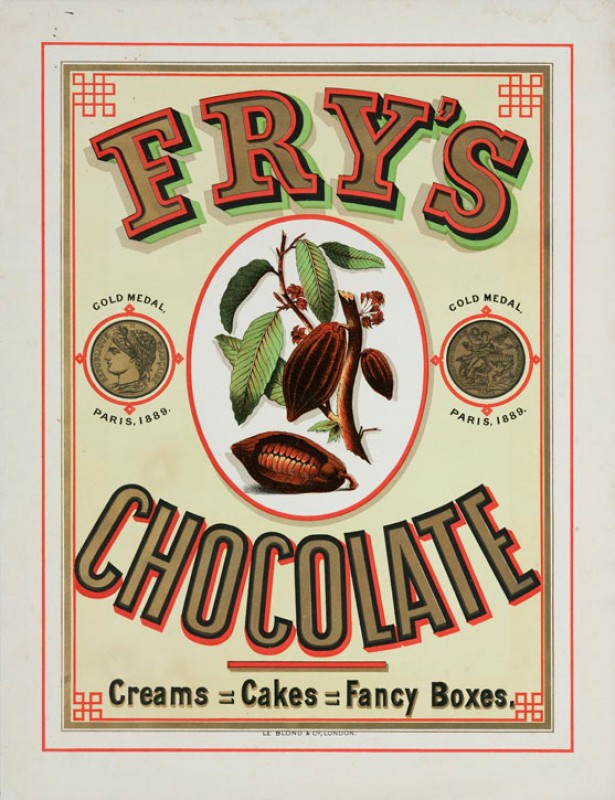


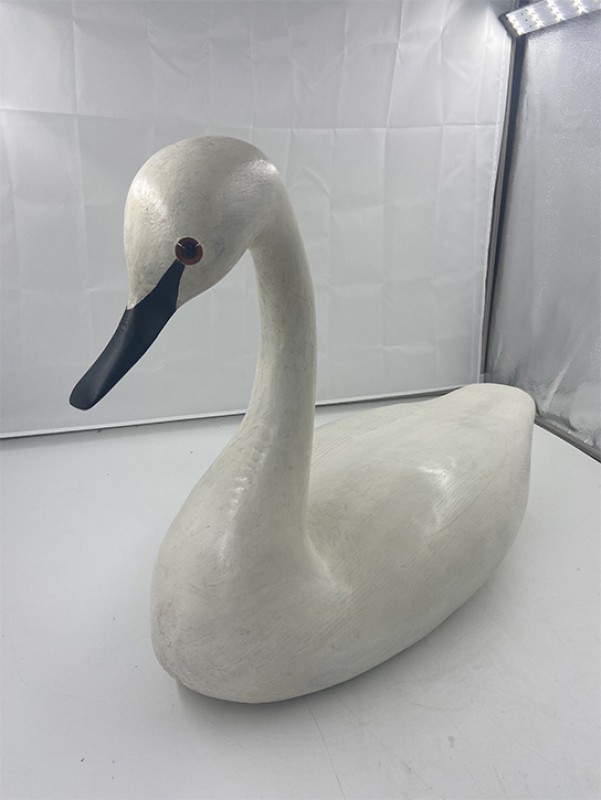
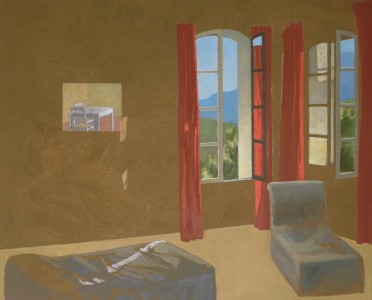
!['Phoebe Boswell: A Tree Says [In These Boughs The World Rustles]' at Orleans House Gallery](https://d3d00swyhr67nd.cloudfront.net/w800h800/artuk_stories/boswell753x1000-edited-thumb-1.jpg)
